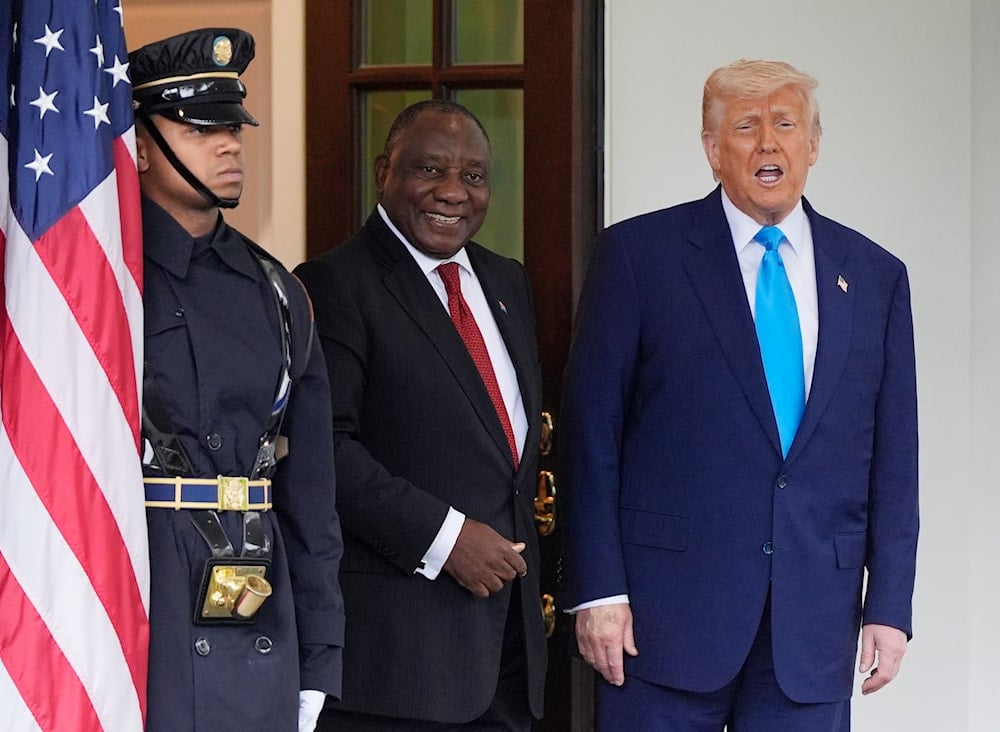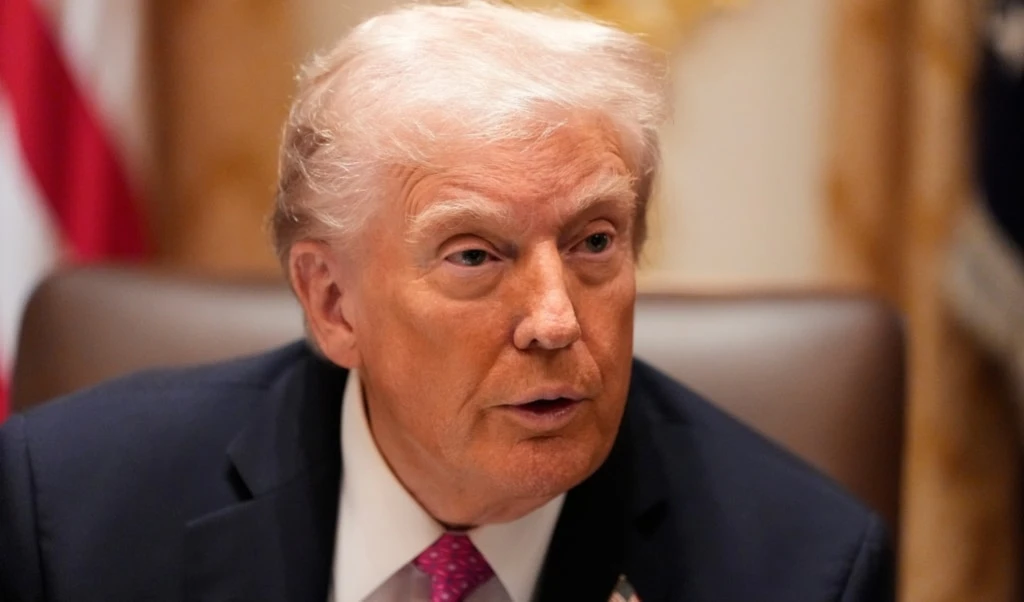Trump pushes white genocide false claim to South Africa's Ramaphosa
Trump confronted South African President Ramaphosa with false claims of white genocide during a tense Oval Office meeting focused on the land reform laws in Ramaphosa's country.
-

President Donald Trump greets South African President Cyril Ramaphosa at the White House, Wednesday, May 21, 2025, in Washington. (AP)
In a tense Oval Office meeting on Wednesday, US President Donald Trump confronted South African President Cyril Ramaphosa with discredited claims of a so-called "white genocide" and unlawful land seizures in South Africa, echoing far-right talking points widely debunked by international observers.
Anticipating a hostile reception, Ramaphosa arrived in Washington accompanied by high-profile white South Africans, including golfers Ernie Els and Retief Goosen, as part of an effort to focus discussions on trade and economic cooperation.
But Trump steered the meeting in a different direction. Launching into an orchestrated presentation, he accused South Africa of persecuting white farmers and confiscating land, bolstering his remarks with a video montage and a stack of printed articles, claiming they substantiated his concerns.
“People are fleeing South Africa for their own safety. Their land is being confiscated, and in many cases, they're being killed,” Trump stated, citing what he called evidence of persecution against white South African farmers.
Despite Trump’s assertions, no land seizures without compensation have occurred under South Africa’s new land reform legislation, which permits such action only when in the public interest and subject to court review.
The law aims to rectify historic apartheid-era land dispossession, but Trump described it as “sort of the opposite of apartheid.”
Ramaphosa refutes claims with symbolic delegation
Sitting beside Trump, Ramaphosa remained calm and countered the allegations directly, pointing to the presence of white South Africans, including billionaire Johann Rupert, as evidence that fears of an anti-white campaign were baseless.
“If this were happening,” Ramaphosa said, referencing the alleged killings and expropriations, “they would not be here.”
Trump, however, was unsatisfied with the response. He directed aides to dim the Oval Office lights before airing a video that depicted white crosses and inflammatory clips of South African opposition leader Julius Malema, claiming the footage depicted targeted killings and demanding Malema’s arrest.
Throughout the presentation, Ramaphosa maintained a reserved demeanor, expressing unfamiliarity with the video and stating he would look into its origins.
Trump’s display of propaganda material escalates tensions
Trump continued the performance by flipping through pages of printed news reports, reportedly repeating the word “death” as he passed the materials to Ramaphosa.
The South African leader acknowledged the country’s crime issues but emphasized that the overwhelming majority of victims were Black South Africans.
When Ramaphosa invoked Nelson Mandela’s legacy of peace and reconciliation, Trump interrupted, asserting that the farmers he referred to were not Black, pressing further on what many observers view as a racist conspiracy theory.
Far-right rhetoric shapes US foreign posturing
Trump’s aggressive stance reflects a broader ideological alignment with far-right narratives both domestically and internationally. His administration has intensified criticism of South Africa not only over land redistribution policies but also for Pretoria’s genocide case against "Israel" at the International Court of Justice (ICJ).
By raising unsubstantiated genocide claims during high-level diplomatic engagements, Trump has amplified a narrative widely promoted by white nationalist groups and far-right media, despite it being discredited by human rights watchdogs and South African statistics.
The Oval Office encounter bore similarities to Trump’s confrontational diplomacy style, notably during a 2020 ambush of Ukraine’s Volodymyr Zelensky. This latest episode has drawn renewed scrutiny over the influence of ideological extremism in shaping US foreign policy rhetoric.

 4 Min Read
4 Min Read









